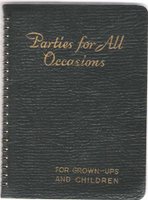François Truffaut called The Honeymoon Killers (1970) his favorite American film. It was written and directed by Leonard Kastle and is based on the true-crime story of Raymond Fernandez and Martha Beck, the "Lonely Hearts Killers," who teamed up to con gullible spinsters and widows of their savings and lives. Kastle, an opera composer, had never made a film before; his friend Warren Steibel (producer of William F. Buckley's television show Firing Line) suggested that the Fernandez-Beck story would make a good film.
Ray (played by Tony Lo Bianco) is a cheap approximation of elegance; Martha (played by Shirley Stoler) is a sour, haughty, contentious woman whose every attempt at conversation seems to turn into an argument. (Stoler's work is almost certainly a major influence on Divine in John Waters' films.) Ray and Martha's mutual passion takes us into operatic territory as they move from murder to murder to their own destruction, accompanied by excerpts from Mahler's Sixth Symphony.
The Honeymoon Killers is no gore-fest, but it is strong stuff: the brief on-screen violence is terrifying in its matter-of-factness. "Hit her again," says Ray. "Finish her," says Martha. What happens off-screen, toward the film's end, is even more terrifying. The film's greatest distinction lies in its hilariously deadpan dialogue, spoken by characters who are wholly without irony. Here are Ray and Martha bickering in the house they've just bought, in Valley Stream, Long Island:
Ray: Don't eat candy at ten o'clock in the morning.
Martha: It's because you're making me nervous!
Ray: You're nervous! How do you think I feel, sitting around here day after day? Now I've even taken to reading these stupid magazines of yours! . . . They call this place Valley Stream. Hmm, hmm. What a joke. One little jail after another with ten feet of grass between them. Valley Stream. I hate it here.
Shooting with a very modest budget ($150,000), Leonard Kastle made a masterpiece. I'd liken
The Honeymoon Killers to Herk Harvey's
Carnival of Souls (1962), another great American film made with maximal imagination and minimal resources. Both films are available from The Criterion Collection, in beautiful digital transfers, with all sorts of wonderful extras.
Link »
The Honeymoon Killers (The Criterion Collection)
Link »
Carnival of Souls (The Criterion Collection)


